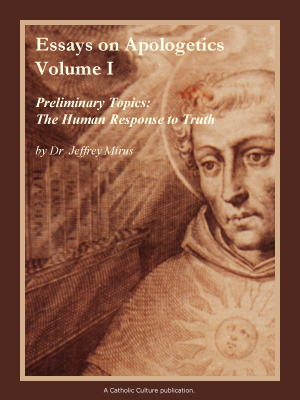What Polynesian languages teach us about the ad orientem liturgy
By Phil Lawler ( bio - articles - email ) | Jul 06, 2016
Several years ago I wrote that a return to the ad orientem posture would be the single most important reform to enrich Catholic liturgy. So I am delighted that Cardinal Robert Sarah proposed exactly that.
This is not just another blue-sky proposal; not a “what if” suggestion. Cardinal Sarah has a mandate. He is the prefect of the Congregation for Divine Worship: the chief Vatican official dealing with liturgical issues. Last year, addressing the Sacra Liturgia conference, he disclosed the Pope Francis has directed him to continue his work for liturgical reform, along the lines established by Pope Benedict XVI/ He has been commissioned to pursue the “reform of the reform”—as the cardinal himself put it, to “put the Sacred Liturgy back at the very heart of the relationship between God and man.”
So now at this year’s Sacra Liturgia conference he has recommended this critical first step. Beginning on the first Sunday of Advent, he suggests, pastors throughout the world should begin celebrating the Novus Ordo facing toward the East: facing the same way that the congregation is facing. And again I say: no single liturgical change could be healthier.
When the priest celebrates Mass facing the people, he, the celebrant becomes the focus of attention. He and his congregation can easily slip into the mistaken belief that it is the priest’s actions—not the action of Christ—that lie at the heart of the Eucharistic liturgy. The routine adoption of the versus populum posture in the wake of Vatican II (although it was not required by the Council) has fueled an epidemic of narcissism among the Catholic clergy. As I observed eight years ago, “The Latin phrase [versus populum] sounds as if the priest is in competition with the people, and sometimes I think that is true.” Then-Cardinal Joseph Ratzinger, in his wonderful book The Spirit of the Liturgy, remarked that ironically, although Vatican II had emphasized the role of the laity, “an unprecedented clericalization came on the scene.”
The Spirit of the Liturgy explains the ad orientem posture far better than I could. (And my wife Leila’s guided tour of the book provides a valuable introduction.) The full text of Cardinal Sarah’s address should soon be available, too. So there is no reason for me to duplicate their profound theological arguments—even if I could. Instead let me explain how a peculiarity of Polynesian languages sheds light on this liturgical discussion.
For this offbeat insight I am grateful to my friend Father Paul Mankowski, SJ. He tells me that in Polynesian languages, there are two different words that can be translated into English as “we” or “us.” One of these words indicates that “we” means you and I, and possibly others. The other form of “we” refers to I and others, but not you. The first word would be used when you wanted to say: "We need to get together more often." The second word would be appropriate for saying: "We don't want anything to do with you."
What does this have to do with the Eucharistic liturgy, you might ask. Good question.
In the Eucharistic Prayer, the priest speaks for the congregation, addressing petitions to God. (“We come to you, Father…” “We ask you…” We offer them…” “…as we celebrate…” “Remember also, Lord…”) But in the versus populum liturgy, as he addresses God, the priest faces the people. This posture is inherently confusing.
Imagine that you and your friends want to make a petition to some powerful figure—the King, let us say. You appoint someone to speak for the group. You approach the King, and your spokesman addresses him. Does the spokesman face toward you? Of course not! He faces with you, toward the King, because you are all in this together.
Under what circumstances would the spokesman face toward the people he represents? Only if he is informing them about decisions reached by some intermediary body—if, say, he is announcing the results of a vote taken up by the members of your group. Or, perhaps, if he is speaking for a “we” that does not necessarily include you.
When the priest takes his stance opposite the people, his body-language sends the message that he is doing something important, and the people are watching. When he stands at the front of the people, with everyone facing in the same direction, he speaks for the “we” that includes us all. If you want the active participation of the laity, don't use a liturgical posture that leaves them wondering whether they are included.
All comments are moderated. To lighten our editing burden, only current donors are allowed to Sound Off. If you are a current donor, log in to see the comment form; otherwise please support our work, and Sound Off!
-
Posted by: feedback -
Jul. 07, 2016 3:07 AM ET USA
This will be a very profound reform. And precisely because of the "endemic narcissism among the Catholic clergy" it will meet fierce opposition and ridicule. But it has to happen. It will vindicate Mother Angelica's EWTN and their former custom of celebrating the Mass where both the priest and the people faced the altar from one direction. It will also vindicate Catholics of the centuries past, who knew very well how to pray, how to receive the Holy Communion and how to go to Confession.
-
Posted by: jjen009 -
Jul. 06, 2016 9:14 PM ET USA
As a linguist, and specialist in a Pacific, not Polynesian, language (the language of the island of Yap), I can say this distinction - 1st person plural inclusive vs exclusive - is much more widespread than just Polynesian languages. It is natural enough that when I am speaking English, instead of Yapese, I miss it and am often conscious of the inherent ambiguity. jj








